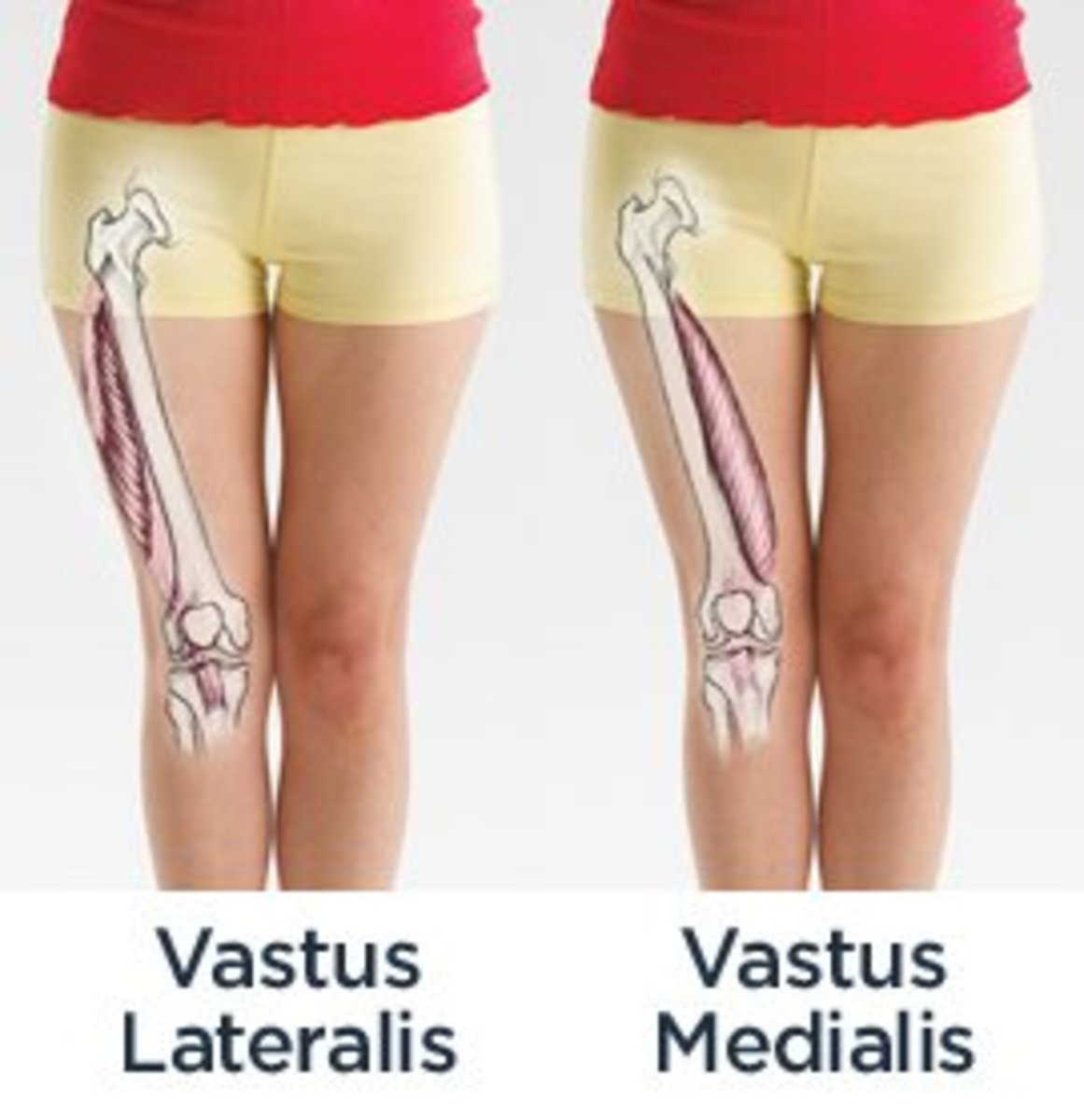Superhumans: Born super? Or made super?
The human body is an amazing thing, the limits of which are constantly being explored. Who are the people who push these boundaries? Are they superhuman by design? By determination? ...... or both?...
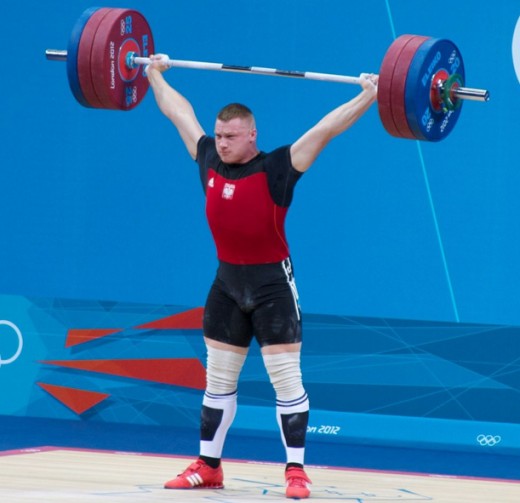
Nature vs Nurture
Nature vs Nurture : Genetics vs Environment in Sporting performance
A combination of varying physical, psychological and emotional characteristics integrate to create each human being, granting them individuality from others. According to modern science, there are two possible over-riding influences on each of these characteristics. One of these arises from within, deep within the nuclei of virtually every cell of the body, and begins exerting its influence almost from conception. The genetic information stored within the human body contains codes for all genotypes and is the predominant determinant of some characteristics, such as eye colour. The other influence on human aspects arises from without, from outside stimulation, such as climate, upbringing, availability of choices and education. In some cases, these environmental influences can be powerfully important in determining the strength and efficiency of a trait, while in others, these environmental effects may be severely limited by the genetics of the individual.
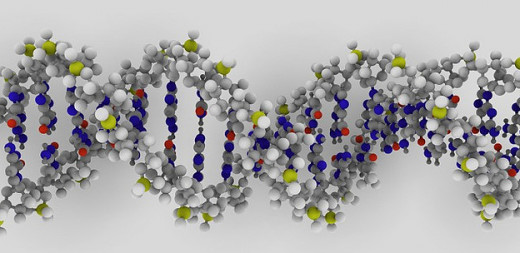
The argument of genetics versus environment, or nature versus nurture,can be traced back through history as far as the Old Testament, ancient Greece and beyond. The bible states “Train up a child in the way he should go, and even when he is old he will not depart from it” (The Holy Bible, Proverbs 22:6), indicating a preference for nurture. Some of the greatest thinkers in history were found in ancient Greece, and they had divided opinions on the subject. Two important philosophers, who both existed at the same time, with contrasting views, were Plato (c. 428-348BC) and Aristotle (384-322BC). Plato, a supporter of nature, who once stated “Good people do not need laws to tell them to act responsibly, while bad people will find a way around the laws.” (Taylor, 2013) is reported to have engaged in heavy debate with Aristotle, his protegé, who once stated “Excellence is an art won by training and habituation. We do not act rightly because we have virtue or excellence, but we rather have those because we have acted rightly. We are what we repeatedly do. Excellence, then, is not an act but a habit.” (Edel, 1996).
The first meaningful act and instinct of the human being is to seek the mothers breast for nourishment. After nine months confined to the womb, it may be reasonably hypothesised that little nurture can have affected this individual, and this 'rooting' reflex is an act of unadulterated nature. By this reasoning, and the commonly observed strict routine the lives of the elderly often follow, it may be suggested that age and nurture are positively associated.
A warning from history, and strong supporting evidence for the power of external influences on human characteristics and behaviour, is the Hitler Jugend, or Hitler Youth movement formed in Germany in the early twentieth century. With the use of clever and extremely powerful propaganda campaigns, millions of German youths were enlisted in this vast paramilitary organisation, which was aimed at creating a new race known as the Aryan race, This elitist stock of what was perceived to be perfect human beings, were being readied for world domination, and many of those still alive today continue to stand by their indoctrinated ideals. This can be seen as a combination of nature and nurture, as the strongest, 'most Aryan' members were selected for greater duties, such as high ranking military positions (Fischer, 1995).
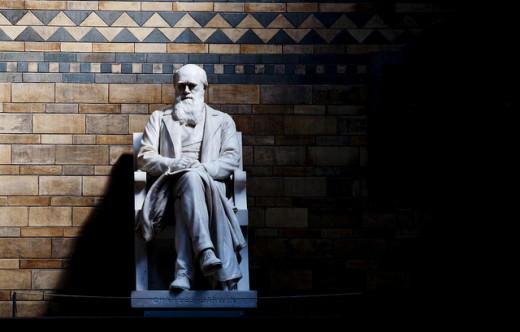
A Little History
During the century before this mass experiment, scientific breakthroughs had spread new light on the subject of nature and nurture, with nature being most affected by the discovery of the science of genetics, and following it, a name for such plots for racial purification, eugenics. Charles Darwins' travels during the 1830s, including a five year circumnavigation of the planet studying flora and fauna, gave rise to written works and theories that have formed the basis of the ever broadening understanding of evolution and genetics that we now have (although the term genetics was not used until some time later), nearly two centuries later (Darwin, 2009). In the controversy filled years to come, an Austrian friar, Gregor Mendel was engrossed in the cultivation and analysis of some twenty nine thousand pea plants, leading to the discovery of the laws of inheritance, findings that provided serious support to Darwins theories, albeit unbeknownst to the man himself (Edelson, 1999). It was an English anthropologist and cousin of Darwins', Francis Galton, who first applied these theories and findings to the study of the human race. Galton recognised the potential for this new science to improve the genetic composition of the population, a concept he named eugenics, going so far as to suggest that monetary incentives be offered to high ranking persons to encourage early marriage (Wright Gillham, 2001). The first recognised 'geneticist' and originator of the word genetics, was William Bateson, a man who furthered the works of his predecessors into the twentieth century, and began the formation of the science as it is now known (Sturtevant, 1965). The central portion of the twentieth century and the concurrent advances in technology, allowed genetics to be understood on a chemical level, with the discovery of DNA and then its structure (Sinden, 1994).
Separating Nature and Nurture?
A great hurdle in understanding the problem of nature versus nurture is the fact that one cannot understand genetics without postulating on matters concerning environment, and vice versa (Bouchard et al, 1997). With great advances in the twentieth century, especially schools of thought and leaps in technology through the middle and latter parts, studies were developed that have moved some way towards alleviating this hurdle. Using new knowledge and techniques to analyse the anthropometry, physiology and biochemistry of the body, studies involving twins allowed an insight into the controversy of nature versus nurture not previously available. In 1971, a study was carried out involving twenty-five sets of twins aged between seven and thirteen, an age deemed old enough to adhere to the tests, while young enough to avoid excess external influences. Aerobic and anaerobic thresholds were tested, as well as maximal heart rate. All three parameters were found to be heavily genetically linked, with confidence values between eighty-one and ninety-three percent (Klissouras, 1971). A few years later, a study involving thirty-one sets of twins took a rather more invasive stance. Muscle biopsies were taken from participants and the ratios of slow and fast twitch muscle fibres were found to be overwhelmingly hereditary, with a confidence value of over ninety-nine percent in males (Komi et al, 1977). In the decade that followed, the findings of these two studies came under heavy scrutiny. In nineteen eighty-six, two studies performed in the same laboratory, addressed this previous research in turn, finding significantly lower levels of heredity for all parameters (Bouchard et al, 1986a; Bouchard et al, 1986b). These studies corrected for many aspects, including weight and body-fat percentage, which may account for some discrepancies, but the main difference with the new research was the use of much older participants (16-34 years), supporting the theory that environmental factors have a greater influence with increasing age (see figure 1).
Twins: May Hold the Key to Understanding Nature and Nurture

In the years following these top-down studies, advancements in techniques, such as Northern blotting, aided by the commencement and ongoing work of the human genome project, allowed a bottom-up, or genetics first approach. Research, such as that by Bouchard et al (2000), slowly elucidated the mystery of which genes, or sets of genes and their alleles are responsible for increased exercise performance. These findings led to the realisation that genomic testing of individuals could reveal those with a genetically greater chance of success in a given sporting discipline, a highly controversial issue which shall be addressed later in this paper.
Nature in Sport
The role of genetics in sporting performance can be seen on a wider scale when looking at ethnic groups. One well researched example of this is the propensity of ethnic Kenyans to excel at distance running. The strongest case put forward to explain this phenomenon is the superior leg biomechanics possessed by many Kenyans, which is possibly attributable to genetics. Studies have shown that the Kenyans' lightweight limbs and greater hamstring to quadriceps ratio may begin to explain the shorter ground contact time they experience during running (Kong and De Heer, 2008). Studies into the physiology and biochemistry of elite distance runners have found higher oxidative enzyme activity and lower lactate accumulation, leading to greater time to fatigue in African athletes compared to Caucasians running at the same relative intensity (Weston et al, 1999). It has been suggested that certain alleles of the gene responsible for the expression of angiotensin-converting enzyme are associated with elite athletes (Amir et al, 2007), however this has not been supported in Kenyan athletes (Scott et al, 2005). Kenya is an extremely poor country, where for most people their legs are their only mode of transport. To walk, or to run between destinations, often carrying heavy loads, has been an accepted way of life for millennia. With regards to this information, it is easy to see why many believe that the advantages detailed above are attributable to genetics, or nature. In essence, the question must be asked, can 'nature' exist without nurture?
Nurture in Sport
Nurture can take various forms in its influence on performance. A person may be 'led' towards a certain skill from an early age so that it becomes ingrained as part of everyday life. This could arise from an eager parent pushing a child towards a sport, or simply from the lack of options available. Another form of nurture which could be said to be more advantageous from a psychological point of view (Ryanet al, 1997), is that born entirely from the choices of the individual. This form of nurture arises from the individuals self-recognised strengths and interests, and may lead to a tighter adherence to training. A good example of the power of nurture is Mark Cavendish, British road cyclist and former world champion. When the British Cycling Academy was formed in 2005, Cavendish was almost omitted from selection due to poor performances in the laboratory physiology tests (nature). After his coaches intervened, telling of the promise they saw in the young cyclist, despite his poor test results, Cavendish was given a place, his determination eventually proving him to be the fastest cyclist in the world (Moore, 2011). This can be seen as nurture overcoming nature, however, it could be suggested that a genetic determination to train harder and become the best was responsible for his rise to the top, showing a fine line between what is nature and what is nurture.
From the evidence and examples given above, the conclusion may be drawn that a combination of both nature and nurture would create the ideal sports-person. A combination of the best genes with good coaching, in a discipline enthused by the individual, would appear to be the perfect recipe for success. Many examples of this exist in sport. Floyd Mayweather comes from a boxing family, his father and two uncles, who have all played a part in his training throughout his career, were successful professional boxers (A+E Television Networks, 2013). Floyd junior has surpassed the achievements of his family members. Lloyd Williams is the current first choice scrum-half for the Cardiff Blues rugby team and has thirteen caps for Wales (Cardiff Blues, 2013). Both Lloyds' father and uncle were successful top flight scrum-halves and have aided in his training. Lloyd has yet to reach the heights of his father, but is still only twenty-three years old. These and many other examples exist for sports requiring wide skill-sets, a collection of talents not necessarily attributable to one gene, or set of genes, except perhaps those which allow calmness under pressure. Interestingly, no notable examples exist for sports requiring narrower skillsets, such as sprinting or marathon running. An individual may automatically mature with the natural capacity to run fast, but not with the ability to deliver an inch perfect pass from the base of a crowded ruck. This leads to the assumption that while nature combined with nurture is the optimum combination, the ratio to which these contribute varies between disciplines, and there may be no overall answer to the problem of nature versus nurture.
Since the full mapping of the human genome in 2003, the understanding of human genetics has improved vastly. It is now possible to focus on thousands of genes, their position within the chromosomes, their functions and corresponding genotypes and faults. The primary benefit of this discovery lies in the diagnosis, prevention and treatment of disease. The understanding of many diseases from the genes up has allowed a more detailed understanding of their aetiologies and pathogenesis, as well as where medical interventions may be possible. It stands to reason that, if harmful genes can be pinpointed, the same applies for beneficial genes.
For good nurture and education implant good constitutions
— Plato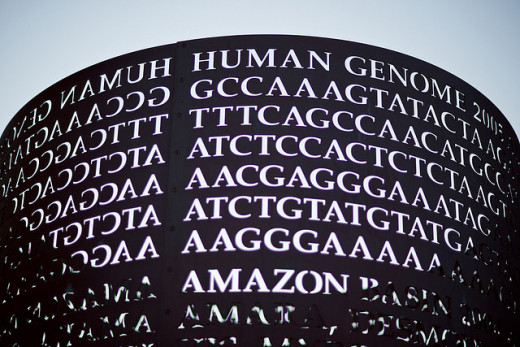
Gene Screening
To some extent, genetic 'pre-selection' for sport can be done. Screening can be carried out, by a simple cheek swab, for the R577X variant of the ACTN3 gene, a gene highly decisive in the type of fibres a persons' muscles will contain, allowing pre-selection for either endurance or power sports (Savulescu and Foddy, 2005). This technology evokes some interesting and controversial arguments. Saving the 'playing God' argument for a section to follow, the strongest opposition to genetic selection is the view that it is cheating. The Oxford dictionary states that to cheat is to gain an unfair advantage (Swannell, 1995). This raises the question of what is an unfair advantage. Nutrition, training and equipment technology, among other aspects, are being advanced by science all of the time. Could it then be said that the use of hydrating sports drinks in cycling is cheating the brandy swilling cyclists of decades past of their record times? Probably not, as they were following the scientific knowledge of their time. Not all cycling teams can afford wind tunnel time to perfect equipment, apparel and riding style, yet this is not classed as cheating. By this standard, the implementation of expensive genetic testing in order to choose the correct riders for the correct jobs and provide them with their ideal nutrition and training techniques may not be classed as cheating either. Another argument against this kind of testing is that it could lead to parents pushing children into sports they do not wish to compete in (Savulescu and Foddy, 2005). A positive by-product of this testing is that a wider genomic scan could reveal congenital and potentially fatal defects that may otherwise have gone unnoticed with devastating consequences. This raises the question, from a sporting point of view, where is the line drawn between screening and the aforementioned cheating? It has been suggested that this line does not exist, and in fact that this type of testing should be encouraged, not only to optimise performance, but also to help avoid those activities not supported by the genome that may lead to injury or illness for the individual (Kambouris, 2011).
Gene Therapy
Advances in the science of genetics has brought about the ability to manipulate the genome using the science of genetic engineering. It is now possible to alter and introduce new genes into an organism, thereby altering genotypes, essentially reprogramming areas of physiology and biochemistry. The theoretical potential for gene therapy to treat and prevent diseases is difficult to comprehend, and as with virtually all medical interventions, the wider sporting community has recognised the potential for performance enhancement. This potential has not gone unnoticed by the World Anti-Doping Agency, who perceived the threat large enough that it banned the use of gene therapy in sport in 2003, listing it as gene 'doping' (World Anti-Doping Agency, 2012). Huge controversy surrounding genetic engineering in humans, mostly centred around religious opposition, has meant that most of the procedures have been carried out in animals. Following some failed attempts at human gene therapy, one resulting in death, human interventions are now more successful, therefore are becoming more abundant.
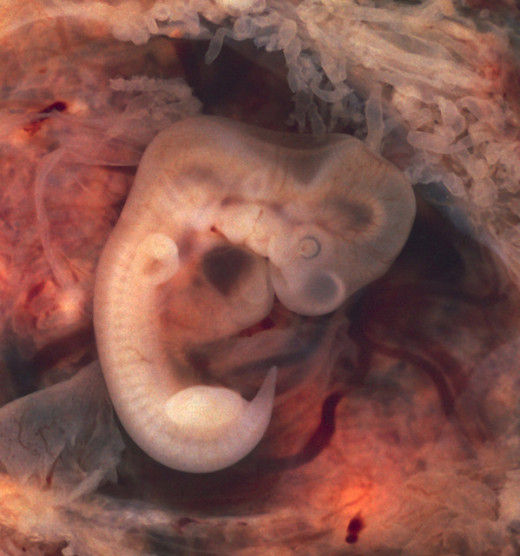
There are three main methods for the delivery of genes into the human genome-
- Direct injection of DNA, which can be taken up by some cells, such as muscle cells
- Re-introducing cells previously removed from the body and cultured in a laboratory
- New DNA delivery by infection with viruses modified to carry the desired DNA
(Schjerling, 2005)
It is clear to see that all of the examples listed above are highly invasive, 'drug' therapies. These procedures can be administered at various stages of life, from treatment of the parents before conception, to the treatment of an embryo, to the treatment of a living, breathing human being. All arguments against genetic testing apply, but the cheating debate holds firmer here, with the addition of foreign material, and is bolstered by the dangers already in evidence. Going back to the definition of cheating, it could be argued that administering a gene possessed by all major rivals would not be gaining an unfair advantage at all, but merely levelling the playing field. It could also be argued that if a treatment was inherited from the parent, the child, or potential sports-person has cheated in no way at all. The view exists that the genetic information within an individuals' cells are what makes that individual who they are, therefore the altering of this information creates a new individual, who has not 'cheated' (Munthe, 2000). This argument may convince some in the case of embryo treatment, as it is argued as to whether an embryo is an individual. Another philosophical argument against gene therapy is that to alter genetic code is to remove autonomy, a critical aspect of being human, with the return argument being that it would not remove autonomy, but rather redirect it (Miah, 2004). The final major argument does not only dispute the right of gene 'doping' in sports, but rather the right of genetic engineering of any kind. The collective religious standpoint, particularly from creationist factions, is that to alter genetic information is to 'play God'. Whichever God we are referring to for each standpoint, is the being who created us and our genetic code, and as such, is the being who has the sole right to tamper with it. A powerful return argument comes from within the religious society itself as various points in the Bible refer to humans as co-creators (Peters, 1995).
Potential Abuse?
Aside from the debate as to whether gene therapy in sport is right, the debate continues as to whether it could work. Genetic interventions have been formulated to combat life threatening diseases, and with some success. However, in the world of sport, a lateral view lent to seemingly innocent, life saving medicine, often reveals benefits unforeseen to their creators, and often with victory rather than health, at the forefront of the mind. That said, therapies exist that need little imagination to understand their sporting implications and inherent dangers. For power sports, genes for proteins that inhibit myostatin have been successfully implanted into mice, leading to extensive muscular growth (McPherron et al, 1997). This is not yet functional for humans, but is a sign of what may be possible. With endurance sports in mind, the scientific breakthroughs are much further advanced. A gene for the treatment of anaemia, responsible for the up-regulation of erythropoietin, therefore erythrocytes, has been successfully trialled in mice. Further trials in humans have led to immunological complications and one reported death (Lippin et al, 2005). This has not deterred at least one coach, who has been revealed to have attempted to obtain quantities of the drug (The New York Times Company, 2007). With athletes, such as cyclists, dying in their early twenties every year, it must be wondered whether some therapies have not leaked into the world of sport already.
Conclusion
In conclusion, in a world moving with, and being advanced by technology all of the time, is screening people for advantageous genes really any different than picking a tall child for basketball? It may be possible to comprehend the creation of 'superhumans' in the not too distant future, but the cheating debate will still be there. The science of genetic engineering is very young, and as exciting as it may be, we do not know the longer term consequences. After-all, if DNA damage is associated with ageing (Donate and Blasco, 2011), and ultimately death, what damage can genetic engineering potentially do? We also do not know what knock on effects altering one part of the genome may have on another. With regards to the nature versus nurture debate, it would appear that the scales may tip differently for different sports and skills.
Rob Langley (BSc (Hons))
Further Reading: Twin Studies
- Twin study - Wikipedia, the free encyclopedia
Here is a link to the wikipedia page concerning the twin studies mentioned in this article
© 2014 Rob L






